
Shuib Abdullah
How to price your job board with Webflow and Memberstack
In this article, we’ll compare the various pricing models used in the industry. By understanding these pricing models, you can make an informed decision when choosing how you will build your job board and start generating revenue.
Job board pricing is an important factor to consider when looking to build a profitable job board platform. You have not one, but two client bases to cater to and keep happy. The potential employee and potential employer. Different job boards operate on different pricing models, so it’s important to compare the features and benefits that each one provides. It’s also important to understand, and take into account for your bottom line, the cost structure of each job board, including any setup fees, recurring fees, and other costs associated with using their service.
Things to consider
Location
Is your job board focused on a certain geographical area or country e.g. restricted to US jobs only or are you listing remote only jobs?
Niche
Does your job board focus on a specific group or talent pool e.g. for designers, or do you cater to all seekers/employers? Niche job boards are getting more popular, especially in the tech industry.
Competition
As with any business, you should always be aware of your competition. Do some basic competitor research and see what competitors you have, what they’re doing, and what their pricing model is etc. Knowing and understanding your competition will let you create and provide a superior service.
Four Pricing Models
There are lots of variations on pricing models, so today we are going to explore four of the most popular.
- Job postings
- Paying to view candidates CV’s
- Subscription model
- Freemium
Job postings
Paying for job postings is an effective way to attract the right candidates for your job openings, especially if you’re building a niche site. It allows employers to target specific audiences, reach a wider pool of potential applicants, and get their job postings seen by the right job seekers faster and easier.
Indeed.com is a good example of a job board that offers sponsored posts. If you go with this pricing model, the sponsored post could be highlighted, in bold and/or put ahead of the other jobs. One could also use a variety of other methods to put certain posts in the spotlight.
Another potential competitor is CareerBuilder. Although their main pricing model is subscription based, they do offer a pay-as-you-go model which is $425, employers are billed once and get 1 job post, 10 resume & social profile views and 35 job boost emails.
This pricing model could also include access to more advanced analytics and track key metrics such as applicant engagement and response rate. This could be a more premium feature, serving as an extra revenue stream. Always have something for your marketing team to upsell!
By using paid job postings, employers can ensure they are getting the best return on their investment in terms of finding the right talent for their openings. The pricing for a job post could vary depending on your niche, your market, or the duration of the posting needed. You could start with offers such as posting 10 jobs for the price of 7, which might entice more recruiters and start giving you traction.
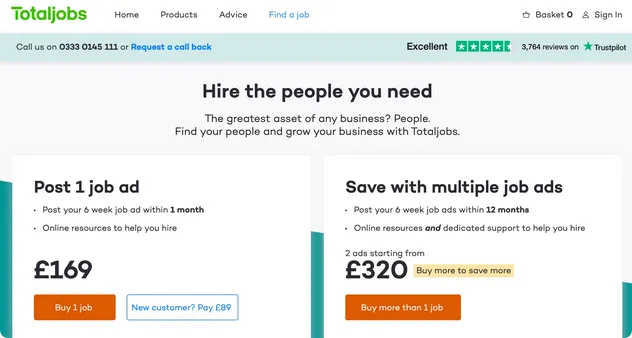
Pros:
- Can help you easily target specific candidates
- Increase visibility, helping employers fill roles quicker
Cons:
- Can be expensive (and potentially risky) for employers, especially with a new job board that hasn’t been tried and tested by time and experience
- Job posts that aren’t sponsored move down the search results and their visibility reduces over time
Pay-per-click
Another great way to incentivise employers and recruiters to post jobs is pay-per-click (PPC). The employer only pays when a job seeker clicks on the post, similar to Google Ads. The cost could be anywhere from 0.10 cents to $5. With a PPC job board, employers can customize their campaigns to reach only qualified candidates that fit their specific requirements.
An example of PPC advertising in Total Jobs is seen in the screenshot below. In this example, the word ‘Ad’ is beside the link to indicate its PPC. This is a great way to advertise jobs since you don’t have to worry about ranking low on search engines.
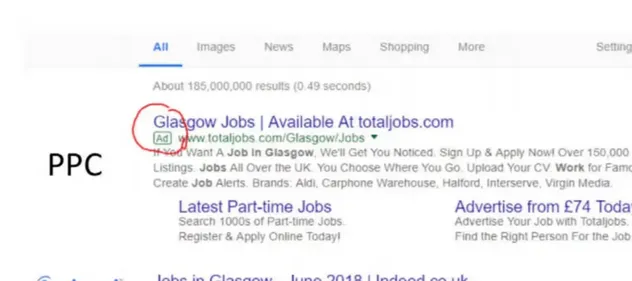
Pros:
- Can make budgeting more efficient and ensure you're paying for genuine interest rather than just posting visibility
- Most PPC job boards allow detailed targeting options, letting you reach specific candidate demographics and adjust bids based on factors like location, experience level, and job title, potentially improving the quality of applicants
Cons:
- Popular job titles or competitive markets can drive up click costs significantly, and without proper budget management, expenses can spiral, especially if many unqualified candidates are clicking on your listings for any reason
- Managing PPC campaigns effectively requires understanding of bid strategies, keyword optimization, and analytics, which can be challenging for recruiters or hiring managers who aren't familiar with digital marketing concepts
Subscription-based
Subscription pricing models for job boards are becoming increasingly popular. This model allows employers to pay a monthly fee for access to the entire pool of potential candidates.
You could either charge a flat fee for a single job board like Monster.com, or offer a monthly membership. The employer would be allowed to post a certain number of jobs for 30 days and even have access to premium features if you decide to include that option. You could even break this down further by having pricing tiers like Standard and Premium with appropriate features and options available at each tier.
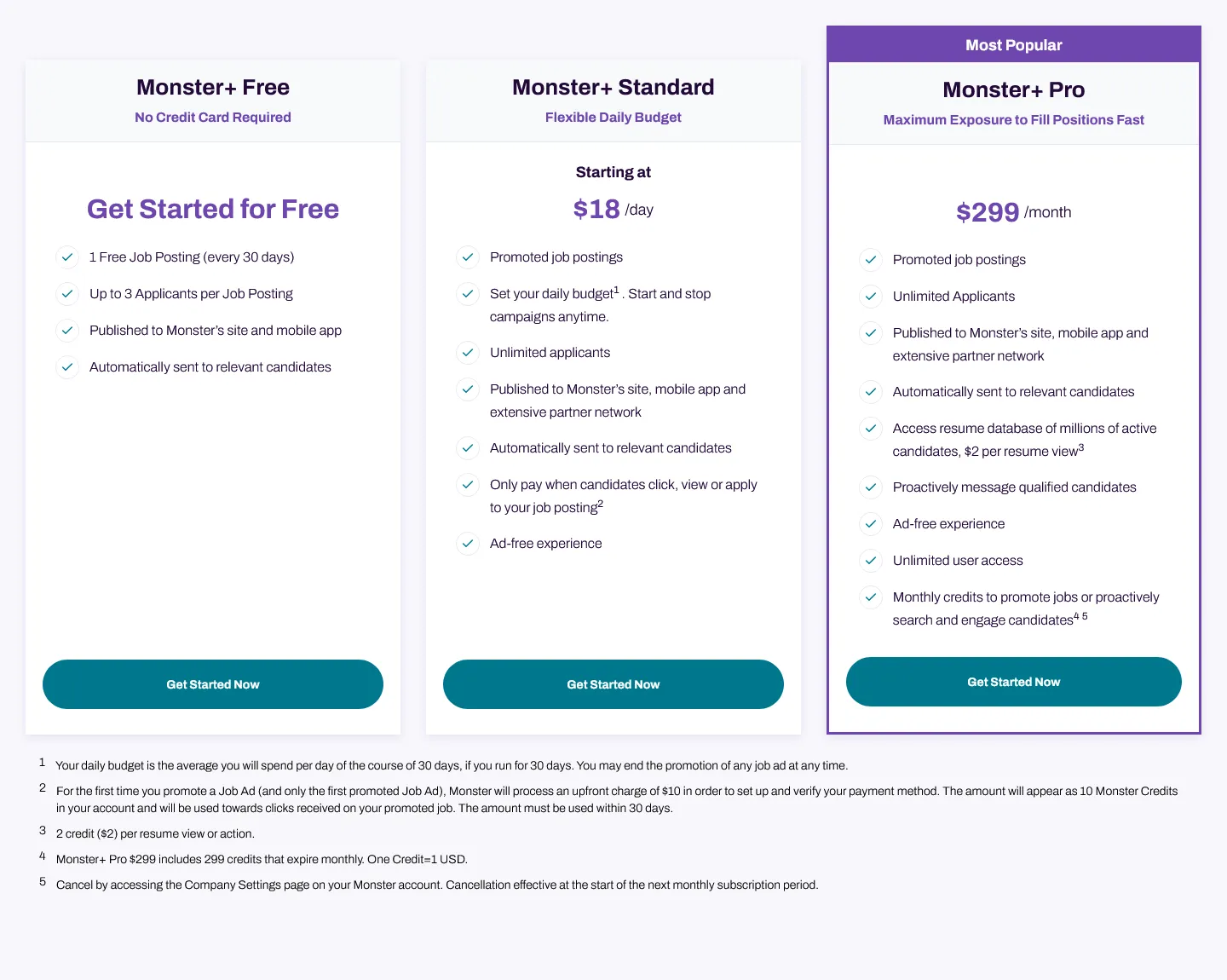
Again, using Monster.com as an example, they have 3 tiers of price plans. A basic free service allowing one job posting per month with up to 3 applicants per job, a daily service costing $18/day for unlimited applicants and a pay per click (when you view resumes) feature, and the Monster Pro for $299 a month with lots of bells and whistles.
This model can be beneficial to employers as it allows them to save time and money by having access to a large number of potential candidates without having to pay per individual job posting.
Pros:
- Ideal for rapidly growing sales teams looking to find high-quality candidates
- Saves employers and recruiters time
- Multiple pricing tiers allow for flexibility depending on the employer's hiring needs
Cons:
- Risk of people taking advantage by signing up for multiple accounts and using them simultaneously, which could lead to revenue losses
- This could be a decrease in engagement or customer satisfaction due to the lack of flexibility in terms of payment options available with subscription-based models
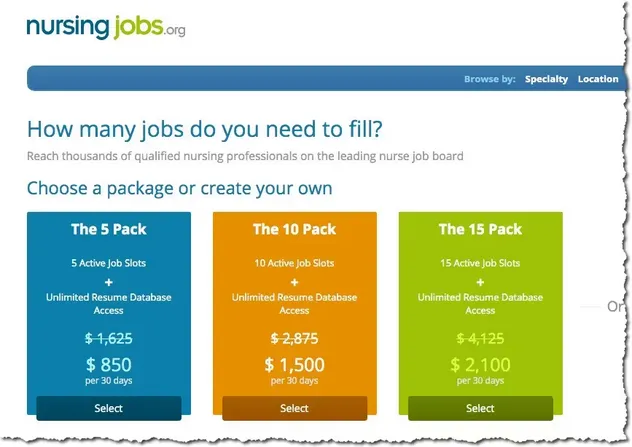
A niche job based example of a tier system subscription model.
Freemium
A freemium job board is a type of job board that allows employers to add job listings with no charge, while also providing premium features or ‘add-ons’ for a certain fee. This type of pricing model has become increasingly popular in the job board industry. It allows the employers a great deal of flexibility and control over exactly how they spend their money by choosing the features they believe will work best for their business.
A freemium pricing model offers employers an affordable way to attract qualified candidates and build their employer brand.
In this model, you’ll post job posts for free, but charge for more premium items and features including:
- Featured Listings
- Access to more candidate resumes
- Advanced search capabilities and targeted candidate outreach
An example of a job board with a freemium option is EuroJobs. Eurojobs is non-specialized and attracts candidates from all industry sectors and job types.

However, it's important to price your premium services appropriately to attract employers and recruiters coming from places like Linkedin. You could do this by offering a free trial or discounts when you first launch, and the occasional special offer thereafter.
Pros:
- Enables employers to reach more potential candidates with their postings
- Provides employers with the ability to track the performance of each listing
- Great for SMEs (Small/Medium Enterprise) to save money by not having to pay for expensive recruiters or services
Cons:
- Lacks features that are above on paid searches such as advanced search
- The pool of candidates available won’t be specific to the employer's niche
- More prone to spam and fraudulent postings, wasting time and resources
Overview of well-known job boards and their Pricing Models
Target audience
Like with any online business, your target audience is pivotal to gaining consistent engagement with your product. The job boards that emphasize a certain industry tend to do well, so going niche could prove useful.
Niche job boards are a great way for employers to find qualified candidates for specialized positions. This directly helps employers target the right people based on their skill set, background and qualifications. For example, if your niche is in the tech industry, potential employers could be startups or digital agencies that are always scaling and looking for talent. Having a targeted approach like this builds trust and allows employers to find the right candidates for the right position in a fast and cost-effective way. This in turn makes it easier for a potential client to pay for your job board on an ongoing basis.
Examples of niche job boards:
Remote only job boards like
Job boards by country like
- UK - https://www.reed.co.uk/
- USA - https://jooble.org/
Job boards for developers like
Job boards for designers like
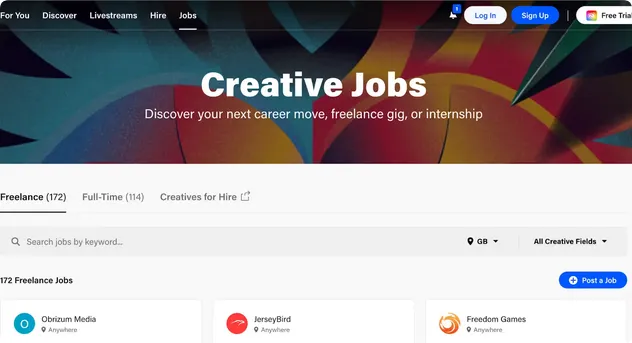
For Job-seekers
The job market has never been more competitive. With more jobs being opened and filled, and application numbers per opening reaching record highs, it's a tough market for job-seekers to navigate. The term ‘quiet quitting’ and ‘job hopping’ has been thrown about in articles and forums alike. Therefore, it's no surprise that membership-based job boards are becoming popular.
With this pricing model, candidates can pay a monthly or annual fee to access the job board and its resources. This type of pricing model allows job boards to offer more services and resources, leading to more candidates securing jobs. The revenue potential for this pricing model is solid as long as you continue to raise awareness of the job board by targeting your audience using digital marketing strategies.
Furthermore, candidates who pay for your job board using a membership model can have access to an array of premium features including:
- Promoting resumes to hiring candidates (maybe for certain keywords like location, job type etc)
- Reports, this could be in the form of salary surveys or case studies
These could all potentially be separated into a 3 tier pricing model in the future.
Lastly, you could add 3rd-party services as an extra revenue stream to your job board. This could be in the form of CV reviews or e-books on interview tips on a particular job industry like software engineering. Even a paid mock interview service could provide a high value return for candidates who haven’t been in the search for some years.
These 3rd-party services are a great way to diversify your resume with little effort since you could outsource them. For example, you could hire a careers coach to offer CV reviews and take a 10% cut. Another option is integrating a marketplace for CV templates, generating passive income. The possibilities are vast.
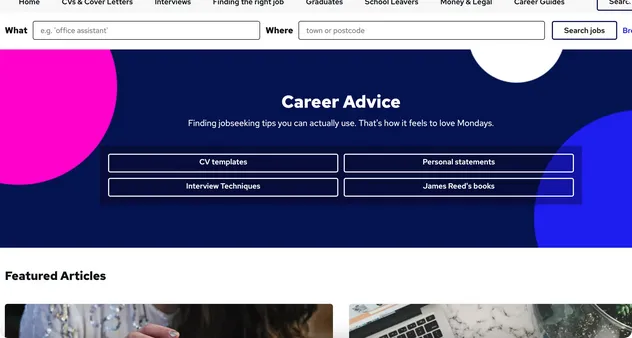
To Wrap Up
Building a profitable pricing model for your job board doesn’t have to be complicated, so we hope you gained some valuable insight from this post.
Add memberships to your Webflow project in minutes.
Over 200 free cloneable Webflow components. No sign up needed.
Add memberships to your React project in minutes.

.webp)







.png)